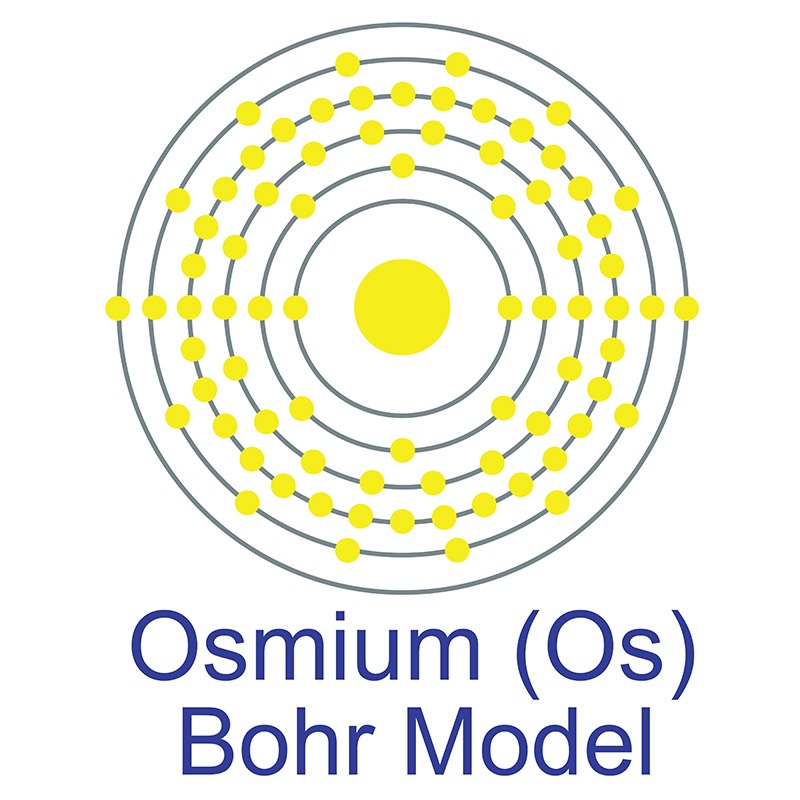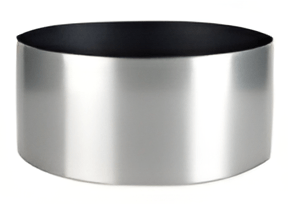SECTION 1. IDENTIFICATION
Product Name: Osmium Band
Product Number: All applicable American Elements product codes, e.g. OS-M-02-BD
, OS-M-03-BD
, OS-M-04-BD
, OS-M-05-BD
CAS #: 7440-04-2
Relevant identified uses of the substance: Scientific research and development
Supplier details:
American Elements
10884 Weyburn Ave.
Los Angeles, CA 90024
Tel: +1 310-208-0551
Fax: +1 310-208-0351
Emergency telephone number:
Domestic, North America: +1 800-424-9300
International: +1 703-527-3887
SECTION 2. HAZARDS IDENTIFICATION
Classification of the substance or mixture
Classification according to Directive 67/548/EEC or Directive 1999/45/EC
Information concerning particular hazards for human and environment: N/A
Label elements
Labelling according to EU guidelines:
Code letter and hazard designation of product:
Risk phrases:
Hazard description:
WHMIS classification
Classification system
HMIS ratings (scale 0-4)
(Hazardous Materials Identification System)
Health (acute effects) = 0
Flammability = 0
Reactivity = 0
Other hazards
Results of PBT and vPvB assessment
PBT: N/A
vPvB: N/A
SECTION 3. COMPOSITION/INFORMATION ON INGREDIENTS
Substances
CAS No. / Substance Name:
7440-04-2 Osmium
Identification number(s):
EC number: 231-114-0
SECTION 4. FIRST AID MEASURES
Description of first aid measures
If inhaled:
Supply patient with fresh air. If not breathing, provide artificial respiration. Keep patient warm.
Seek immediate medical advice.
In case of skin contact:
Immediately wash with soap and water; rinse thoroughly.
Seek immediate medical advice.
In case of eye contact:
Rinse opened eye for several minutes under running water. Consult a physician.
If swallowed:
Seek medical treatment.
Information for doctor
Most important symptoms and effects, both acute and delayed
No data available
Indication of any immediate medical attention and special treatment needed
No data available
SECTION 5. FIREFIGHTING MEASURES
Extinguishing media
Suitable extinguishing agents Special powder for metal fires. Do not use water.
For safety reasons unsuitable extinguishing agents Water
Special hazards arising from the substance or mixture
In case of fire, the following can be released:
Toxic metal oxide fume
Advice for firefighters
Protective equipment:
Wear self-contained respirator.
Wear fully protective impervious suit.
SECTION 6. ACCIDENTAL RELEASE MEASURES
Personal precautions, protective equipment and emergency procedures
Use personal protective equipment. Keep unprotected persons away.
Ensure adequate ventilation
Keep away from ignition sources
Environmental precautions:
Do not allow material to be released to the environment without official permits.
Methods and materials for containment and cleanup:
Ensure adequate ventilation.
Keep away from ignition sources.
Reference to other sections
See Section 7 for information on safe handling
See Section 8 for information on personal protection equipment.
See Section 13 for disposal information.
SECTION 7. HANDLING AND STORAGE
Handling
Precautions for safe handling
Handle under dry protective gas.
Keep container tightly sealed.
Store in cool, dry place in tightly closed containers.
Ensure good ventilation at the workplace.
Information about protection against explosions and fires:
Protect against electrostatic charges.
Conditions for safe storage, including any incompatibilities
Requirements to be met by storerooms and receptacles: Store in a cool location.
Information about storage in one common storage facility:
Store away from oxidizing agents.
Store away from halogens.
Do not store with interhalogens.
Store away from phosphorus.
Store away from air.
Further information about storage conditions:
Store under dry inert gas.
Keep container tightly sealed.
Store in cool, dry conditions in well-sealed containers.
This product is air sensitive.
Specific end use(s) No data available
SECTION 8. EXPOSURE CONTROLS/PERSONAL PROTECTION
Additional information about design of technical systems:
Properly operating chemical fume hood designed for hazardous chemicals and having an average
face velocity of at least 100 feet per minute.
Control parameters
Components with limit values that require monitoring at the workplace:
Additional information: No data
Exposure controls
Personal protective equipment
Follow typical protective and hygienic practices for handling chemicals.
Keep away from foodstuffs, beverages and feed.
Remove all soiled and contaminated clothing immediately.
Wash hands before breaks and at the end of work.
Maintain an ergonomically appropriate working environment.
Breathing equipment: Use suitable respirator when high concentrations are present.
Protection of hands:
Impervious gloves
Inspect gloves prior to use.
Material of gloves
The selection of suitable gloves not only depends on the material, but also on quality.
Quality will vary from manufacturer to manufacturer.
Eye protection: Safety glasses
Body protection: Protective work clothing.
SECTION 9. PHYSICAL AND CHEMICAL PROPERTIES
Information on basic physical and chemical properties
Appearance:
Form: Disc/Target
Color: grey
pH: N/A
Melting point/Melting range: 3045°C (5513 °F)
Boiling point/Boiling range: 5027°C (9081 °F)
Sublimation temperature / start: No data available
Flammability (solid, gas) Highly flammable.
Ignition temperature: No data available
Decomposition temperature: No data available
Autoignition: No data available.
Explosion limits:
Lower: No data available
Upper: No data available
Vapor pressure at 2450°C (4442 °F): 0.0013 hPa
Density at 20°C (68 °F): 22.61 g/cm3 (188.68 lbs/gal)
Relative density No data available.
Vapor density N/A
Evaporation rate N/A
Solubility in / Miscibility with
Water: Insoluble
Segregation coefficient (n-octonol/water): No data available.
Viscosity:
Dynamic: N/A
Kinematic: N/A
Other information No data available
SECTION 10. STABILITY AND REACTIVITY
Reactivity
Chemical stability
Thermal decomposition / conditions to be avoided:
Decomposition will not occur if used and stored according to specifications.
Possibility of hazardous reactions
Osmium powder forms toxic osmium tetroxide when exposed to air.
Incompatible materials:
Air
Oxidizing agents
Halogens
Interhalogens
Phosphorus
Hazardous decomposition products: Toxic metal oxide fume
SECTION 11. TOXICOLOGICAL INFORMATION
Information on toxicological effects
Acute toxicity:
Primary irritant effect:
on the skin: May cause irritation
on the eye: May cause irritation
Sensitization: No sensitizing effects known.
Additional toxicological information:
To the best of our knowledge the acute and chronic toxicity of this substance is not fully known.
No classification data on carcinogenic properties of this material is available from the EPA, IARC, NTP, OSHA or ACGIH.
The Registry of Toxic Effects of Chemical Substances (RTECS) contains acute and/or other multiple dose toxicity data for components in this product.
SECTION 12. ECOLOGICAL INFORMATION
Toxicity
Aquatic toxicity: No data available
Persistence and degradability No data available
Behavior in environmental systems:
Bioaccumulative potential No data available
Mobility in soil No data available
Additional ecological information:
Do not allow material to be released to the environment without official permits.
Results of PBT and vPvB assessment
PBT: N/A
vPvB: N/A
Other adverse effects No data available
SECTION 13. DISPOSAL CONSIDERATIONS
Waste treatment methods
Recommendation Consult official regulations to ensure proper disposal.
Uncleaned packagings:
Recommendation: Disposal must be made according to official regulations.
SECTION 14. TRANSPORT INFORMATION
UN-Number
DOT, ADR, ADN, IMDG, IATA N/A
UN proper shipping name
DOT, ADR, ADN, IMDG, IATA N/A
Transport hazard class(es)
DOT, ADR, ADN, IMDG, IATA
Class N/A
Packing group
DOT, ADR, IMDG, IATA N/A
Environmental hazards:
Marine pollutant: Yes (PP)
Special precautions for user N/A
Transport in bulk according to Annex II of
MARPOL73/78 and the IBC Code N/A
SECTION 15. REGULATORY INFORMATION
Safety, health and environmental regulations/legislation specific for the substance or mixture
Product related hazard informations:
Hazard symbols:
F Highly flammable
Risk phrases:
11 Highly flammable.
National regulations
All components of this product are listed in the U.S. Environmental Protection Agency Toxic Substances Control Act Chemical substance Inventory.
All components of this product are listed on the Canadian Domestic Substances List (DSL).
Information about limitation of use: For use only by technically qualified individuals.
Other regulations, limitations and prohibitive regulations
REACH - Pre-registered substances Substance is listed.
Chemical safety assessment: A Chemical Safety Assessment has not been carried out.
SECTION 16. OTHER INFORMATION
Safety Data Sheet according to Regulation (EC) No. 1907/2006 (REACH). The above information is believed to be correct but does not purport to be all inclusive and shall be used only as a guide. The information in this document is based on the present state of our knowledge and is applicable to the product with regard to appropriate safety precautions. It does not represent any guarantee of the properties of the product. American Elements shall not be held liable for any damage resulting from handling or from contact with the above product. See reverse side of invoice or packing slip for additional terms and conditions of sale. COPYRIGHT 1997-2022 AMERICAN ELEMENTS. LICENSED GRANTED TO MAKE UNLIMITED PAPER COPIES FOR INTERNAL USE ONLY.
 The number of electrons in each of osmium's shells is [2, 8, 18, 32, 14, 2] and its electron configuration is [Xe] 4f14 5d6 6s2. The osmium atom has a radius of 135 pm and a Van der Waals radius of 216 pm. Osmium was discovered and first isolated by Smithson Tennant in 1803.
The number of electrons in each of osmium's shells is [2, 8, 18, 32, 14, 2] and its electron configuration is [Xe] 4f14 5d6 6s2. The osmium atom has a radius of 135 pm and a Van der Waals radius of 216 pm. Osmium was discovered and first isolated by Smithson Tennant in 1803.  In its elemental form, osmium has a silvery blue cast apperance. Osmium has the highest melting point and the lowest vapor pressure of any of the platinum group of metals it is also the densest naturally ocurring element. Osmium is the least abundant stable element in the earth's crust. It is found in the alloys osmiridium and iridiosmium and as a free element. The origin of the name Osmium comes from the Greek word osme, meaning a smell or odor.
In its elemental form, osmium has a silvery blue cast apperance. Osmium has the highest melting point and the lowest vapor pressure of any of the platinum group of metals it is also the densest naturally ocurring element. Osmium is the least abundant stable element in the earth's crust. It is found in the alloys osmiridium and iridiosmium and as a free element. The origin of the name Osmium comes from the Greek word osme, meaning a smell or odor.

